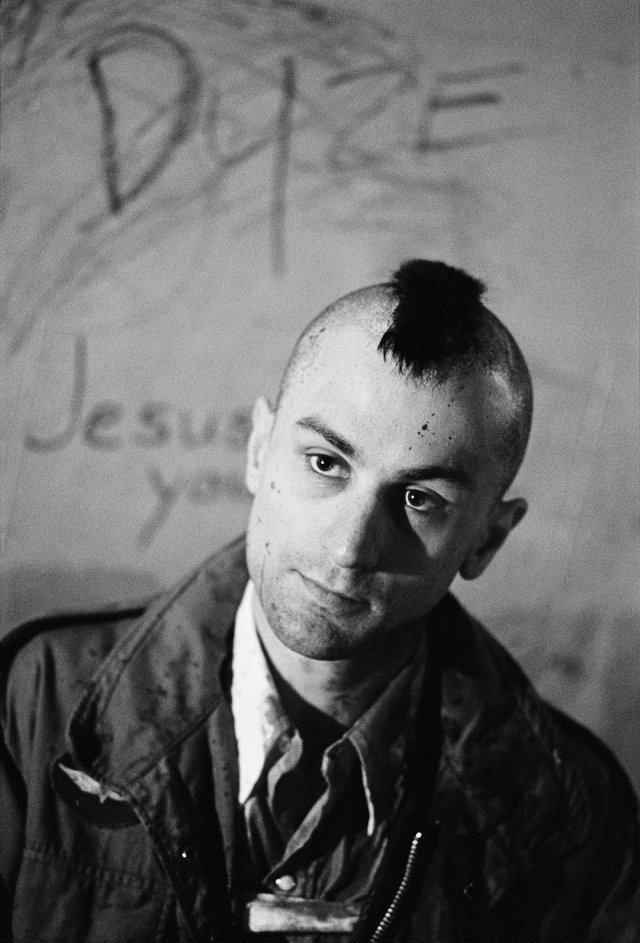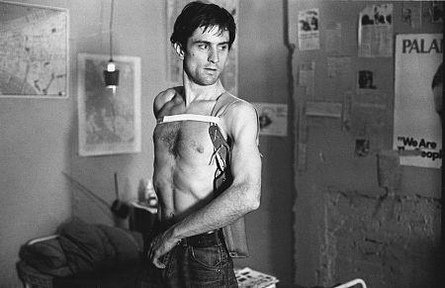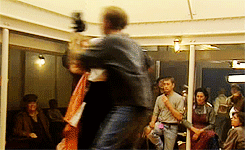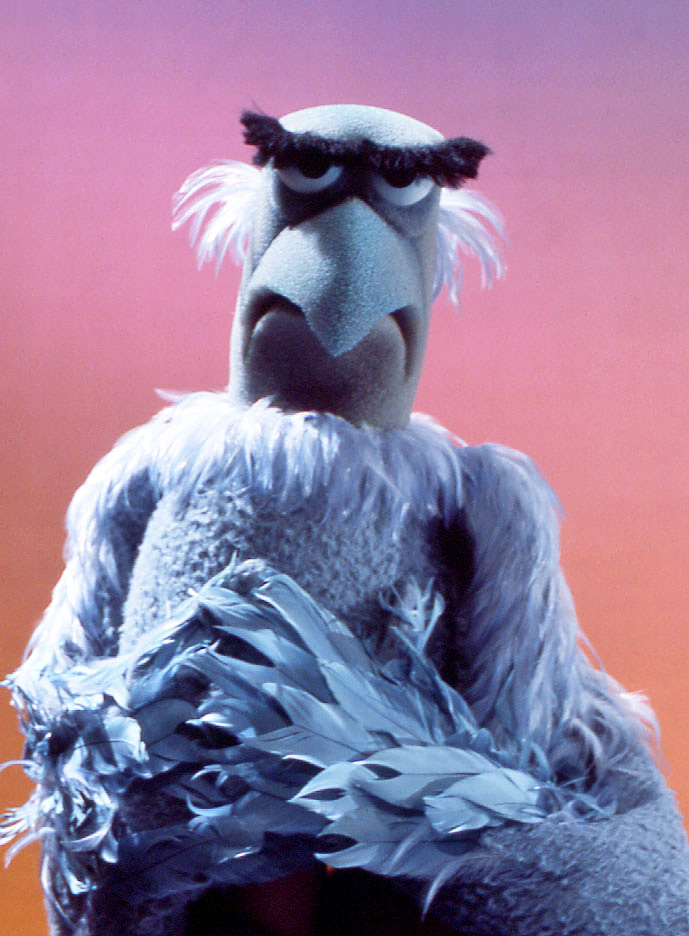ahead of its time, and still ahead of the present
timeRemapExportHD from Adrien M / Claire B on Vimeo.
- Saturday, November 10, 2012
- Posted by Dahiyaht at 1:05 PM
-
0
comments

Rules(of thirds) are meant to be Broken
- Sunday, October 28, 2012
- Posted by Dahiyaht at 2:07 PM
-
0
comments

- Posted by Dahiyaht at 2:14 PM
-
0
comments

- Posted by Dahiyaht at 2:07 PM
-
0
comments

Nicolas Jaar feat. Scout LaRue – With Just One Glance (20120)
- Saturday, October 6, 2012
- Posted by XAЯA at 8:34 PM
-
0
comments

- Labels: music
Film History - Origins Of The Motion Picture
- Thursday, October 4, 2012
- Posted by XAЯA at 7:04 PM
-
0
comments

- Labels: film class
Battleship Potemkin (1925)
A Russian propaganda film directed by Sergei Eisenstein
I don't think I will ever get bored looking at this film... it's rich in disturbing imagery, particularly the Odessa Steps sequence, and the music works very well to establish the mood and tension. My friend pointed out how, if the Odessa sequence was shot today the use of slow-mo would have been used instead (In the film the many cuts make it seem like the number of people running down the steps keeps increasing. It still works quite well though, to emote the chaos and terror of the massacre (which never happened.)
SPOILER ALERT
Film Class Summary
Sailors on board the Battleship Potemkin are disgusted that they are being made to eat rotten meat. Later in defiance, some reject the soup given. The captain orders everyone onto the deck and threatens to shoot those who did not eat the soup. A squad readies to fire on the group but steps down when Vakulinchuk implores them to see reason. A riot breaks out and the sailors overthrow the officers and captain, and Vakulinchuk is killed in the process. Potemkin calls at the port of Odessa, and the story of Vakulinchuk spreads. People gather on the steps near the port but are gunned down ruthlessly by Tsarist troops who appear suddenly. In retaliation the sailors aboard Potemkin shoot back, leaving the harbour. Other battleships close in on Battleship Potemkin but at the last second they give their brothers safe passage, and allow them to pass.
- Tuesday, October 2, 2012
- Posted by XAЯA at 11:27 PM
-
1
comments

- Labels: film class
The Godfather (1972)
My favourite scenes (there are actually many more good scenes!) from The Godfather:
When Michael, Sonny and Tom Hagen discuss about killing Sollozzo and McCluskey. I like how this shot seems to foreshadow Michael's later ascension to become the Godfather, just look at the way he sits in the chair, and even though Michael is at the lowest point in the room, he still feels the most powerful. Also the frame cuts Sonny in half, implying how little importance his input plays in the conversation (and future), and the contrast in the close up is nicely done when he/they start to not take Michael seriously. The shot after is framed behind Michael which forces him to turn around in his chair, showing that the others don't see him eye to eye yet/seriously yet.
Sonny: You've gotta get up close like this and - bada-BING! - you blow their brains all over your nice Ivy League suit.
The last scene where Michael flat out lies to Kay about Carlo Rizzi's death. Kay is shown getting a drink, and is separated and distanced from Michael in the background by the room wall; a hint at how she is an outsider to the Corleone family affairs, and this is further emphasized when we see the door being closed on her.
Also, the presence of oranges seems to indicate impending death or violence, although the production designer Dean Tavoularis says it was really to add colour to dark scenes. (Apparently the oranges in part 2, and 3 were use with intent and purpose)
source: http://www.jgeoff.com/godfather/oranges.html
http://www.destinationhollywood.com/movies/godfather/feature_oranges.shtml
The Godfather is the greatest film of all time? Agree. I was told to watch this by countless people and finally got round to it a forthnight ago. I had zero inkling about what it really was about before I watched it, just that it was a show about the Mafia and... that's about it. It's brilliant! Everything about this movie just works so wonderfully well that it definitely warrants a another look in depth in greater detail.
- Posted by XAЯA at 11:04 PM
-
0
comments

- Labels: movies
Al-Infitar (The Cleaving, Bursting Apart)
Sūrat al-Infiṭār (Arabic: سورة الانفطار) (The Cleaving, Bursting Apart) is the 82nd sura of the Qur'an with 19 ayat. The chapter is named ‘Al-Infitar’ because of the occurrence of the word ‘unfatarat’, in the first verse of this chapter. Infitar means ‘split asunder’. This word, ‘Unfatarat’ is used in this chapter in order to describe the splitting the sky on the day of Judgment. This chapter (Al-Infitar), along with Chapter At-Takwir and Al-Inshiqaq provide exhaustive description about ‘Day of Judgment’.
source: wiki
source: wiki
- Posted by XAЯA at 10:15 PM
-
0
comments

- Labels: words
Alone- Maya Angelou (1975)
LYING, thinking
Last night
How to find my soul a home
Where water is not thirsty
And bread loaf is not stone
I came up with one thing
And I don't believe I'm wrong
That nobody,
But nobody
Can make it out here alone.
Last night
How to find my soul a home
Where water is not thirsty
And bread loaf is not stone
I came up with one thing
And I don't believe I'm wrong
That nobody,
But nobody
Can make it out here alone.
Alone, all alone
Nobody, but nobody
Can make it out here alone.
Nobody, but nobody
Can make it out here alone.
There are some millionaires
With money they can't use
Their wives run round like banshees
Their children sing the blues
They've got expensive doctors
To cure their hearts of stone.
But nobody
No, nobody
Can make it out here alone.
With money they can't use
Their wives run round like banshees
Their children sing the blues
They've got expensive doctors
To cure their hearts of stone.
But nobody
No, nobody
Can make it out here alone.
Alone, all alone
Nobody, but nobody
Can make it out here alone.
Nobody, but nobody
Can make it out here alone.
Now if you listen closely
I'll tell you what I know
Storm clouds are gathering
The wind is gonna blow
The race of man is suffering
And I can hear the moan,
'Cause nobody,
But nobody
Can make it out here alone.
I'll tell you what I know
Storm clouds are gathering
The wind is gonna blow
The race of man is suffering
And I can hear the moan,
'Cause nobody,
But nobody
Can make it out here alone.
Alone, all alone
Nobody, but nobody
Can make it out here alone.
Nobody, but nobody
Can make it out here alone.
"Alone" can be found in Dr. Angelou 's Book "Oh Pray My Wings Are Gonna Fit Me Well" which was published by Random House in 1975 (http://answers.yahoo.com/question/index?qid=20120426163832AAWnOKk)
- Monday, October 1, 2012
- Posted by XAЯA at 12:28 AM
-
0
comments

- Labels: poetry
Robert De Niro in Taxi Driver (1976)
Robert De Niro's performance in Taxi Driver was brilliant.
( Man, he is damn good looking. I think I fell in love with him when he played Vito Corleone in The Godfather: Part II )
- Sunday, September 30, 2012
- Posted by XAЯA at 11:00 PM
-
0
comments

- Labels: People
Neil Gaiman Addresses the University of the Arts Class of 2012
Very good advice and wisdom from the brilliant Neil Gaiman.
Whatever happens, do good art.
- Friday, September 28, 2012
- Posted by XAЯA at 10:28 PM
-
0
comments

- Labels: inspiration, videos
Procrastination
- Sunday, September 23, 2012
- Posted by XAЯA at 7:56 PM
-
0
comments

- Labels: psychology, videos
Mise-En-Scene
Mise-en-scène ( "placing on stage") is an expression used to describe the design aspects of a theatre or film production, which essentially means "visual theme" or "telling a story"—both in visually artful ways through storyboarding, cinematography and stage design, and in poetically artful ways through direction. Mise-en-scène has been called film criticism's "grand undefined term".
When applied to the cinema, mise-en-scène refers to everything that appears before the camera and its arrangement—composition, sets, props, actors, costumes, and lighting. Mise-en-scène also includes the positioning and movement of actors on the set, which is called blocking.These are all the areas overseen by the director, and thus, in French film credits, the director's title is metteur en scène, "placer on scene."
Source: http://en.wikipedia.org/wiki/Mise_en_sc%C3%A8ne
Hilarious 4 minute explanation by Indy Mogul
When applied to the cinema, mise-en-scène refers to everything that appears before the camera and its arrangement—composition, sets, props, actors, costumes, and lighting. Mise-en-scène also includes the positioning and movement of actors on the set, which is called blocking.These are all the areas overseen by the director, and thus, in French film credits, the director's title is metteur en scène, "placer on scene."
Source: http://en.wikipedia.org/wiki/Mise_en_sc%C3%A8ne
Hilarious 4 minute explanation by Indy Mogul
- Friday, September 21, 2012
- Posted by XAЯA at 2:41 AM
-
0
comments

- Labels: film class, Film Terminology
Tokyo! (2008)
Tokyo! is a 2008 film triptych of short films by non-Japanese directors.
Interior Design- Michel Gondry
Merde- Leos Carax
Shaking Tokyo- Bong Joon-ho
I loved Shaking Tokyo, about Hikikomori syndrome(Japanese social withdrawal syndrome). Also, power button tattoo, how awesome is that!
Part 1 of 4 of Shaking Tokyo here: http://www.youtube.com/watch?v=3AQgY-7jHTA
- Posted by XAЯA at 2:10 AM
-
0
comments

- Labels: movies
Cross Cutting Vs. Parallel Editing
Cross-cutting: Literally, cutting between different sets of action that can be occurring simultaneously or at different times, (this term is used synonymously but somewhat incorrectly with parallel editing.) Cross-cutting is used to build suspense, or to show the relationship between the different sets of action.
http://dave.net.au/online/filmandvid/html/parallel.html
Parallel editing: An editing technique that allows two or more simultaneous sets of action to unfold within a single film sequence. Uses: Creates tension, can show multiple points of view and can create dramatic irony when the characters are unaware of events unfolding away from the main action.
http://en.wikipedia.org/wiki/Cross-cutting
There is a difference between cross cutting and parallel editing and that would would be time. You can cross cut to shots from different time periods, but the term parallel editing is used to show two separate events scenes happening simultaneously. I guess at times this means you could use the term interchangeably when writing based on the circumstance of the scene.
http://dave.net.au/online/filmandvid/html/parallel.html
Parallel editing: An editing technique that allows two or more simultaneous sets of action to unfold within a single film sequence. Uses: Creates tension, can show multiple points of view and can create dramatic irony when the characters are unaware of events unfolding away from the main action.
http://en.wikipedia.org/wiki/Cross-cutting
There is a difference between cross cutting and parallel editing and that would would be time. You can cross cut to shots from different time periods, but the term parallel editing is used to show two separate events scenes happening simultaneously. I guess at times this means you could use the term interchangeably when writing based on the circumstance of the scene.
- Wednesday, September 19, 2012
- Posted by XAЯA at 11:25 PM
-
0
comments

- Labels: Cinematic Techniques
How a Camera Works
Easy peasy!
- Tuesday, September 18, 2012
- Posted by XAЯA at 9:50 PM
-
0
comments

- Labels: How-To
Titanic (1997)- Cinematic Techniques
- Posted by XAЯA at 7:44 PM
-
0
comments

- Labels: Cinematic Techniques
Metropolis (1927) Special Effects
Even with limited technology they managed to pull off convincing special effects. The shot of the Tower of Babel being actually erased and drawn frame by frame is just mindblowing.
- Posted by XAЯA at 7:36 PM
-
0
comments

- Labels: film class
Schüfftan process
Before the invention of the blue screen and travelling matte, a special effect known as the Schüfftan process helped in combining miniatures and actors/scenery in shots.
Eugen Schüfftan created the Schüfftan process during the production of Metropolis (1927), directed by Fritz Lang. Metropolis is set in the dystopian future, and the director wanted to add actors into shots involving miniature sets of buildings and skyscrapers. Schüfftan placed a piece of partial mirror 45 degrees to the miniature set/drawing and the camera. Part of the mirror is left for the camera to shoot through to the actual shot of the actors and scenery.
See also: Pepper's Ghost!
more info on the Schüfftan process here: http://fxtuto.blogspot.sg/2009/06/schufftan-process-turorial.html
- Posted by XAЯA at 7:31 PM
-
0
comments

- Labels: film class
The Design of Everyday Things (1988)
By Donald A. Norman
The Design of Everyday
Things is written by Donald Arthur Norman. It was first published by Basic Books
in 1988.
About the Author
Donald Norman, a
cognitive psychologist whose work revolves largely around user-centered design,
has been helmed by Business Week as on of “the world's most influential
designers". He has made great contributions to the area human centered
design, and has worked at places like Apple Computer and Hewlett-Packard. He
has also taught at various universities worldwide.
Summary
The Design of Everyday
Things (originally published as The Psychology Of Everyday Things) uses
psychology to explain the good and bad design in everyday objects. It also suggests
design solutions and principles to address the unintentional problems created
with bad design.
Norman
addresses, in chapter one, the mystery of hard-to-use doors. Something as
simple as a door that is poorly designed, can confuse and frustrate users. Here
he introduces the term “affordances” as
a means to indicate whether you push or pull on a door, for example a
horizontal bar affords (is for) pushing against as it is just natural to do so.
He suggests making buttons and switches more visible (1 button for more
function, reduce hidden functions) and natural mapping between controls and their
functions that leave no room for ambiguity. He stresses the principle of
feedback to help users know that a result is accomplished. One example is the
beeps we hear when we dial the telephone, which helps us to know that we have
successfully dialed the number on our phones.
Norman
also explains how our lives are filled with misconceptions. As humans we tend
to make causal inferences. When B occurs after A, and C after B, we tend to
rationalize it as A having caused B, which in turn caused C to occur, even if
it were just coincidental. It is interesting to note too that we tend to blame
our misfortunate on our environment, but when it comes to other people, we tend
to blame their personalities instead. Norman cautions us to not confuse and
assign blame to ourselves when it may actually be the fault of a bad design. If
a design has to be labeled, then it may not be working as well as it should.
Here he suggests using the seven stages of action as design aids to help create
more user-friendly design.
Constraints
also limit and control how we use objects. If something were designed to only
work in one way, in the way that it should, this cuts down user failure (and
frustration) to zero. For example, by mapping out light switches to the floor
plan of the room and incorporating that into the design of the switch, we can
eliminate the annoying event where we flip switches on and off in attempt to
figure out which switches work certain lights.
Norman
ends the book with suggestions and ideas to guide the design of everyday things
such as simplifying task structures, providing mental aids/labels, utilizing
natural mappings, designing constraints and when all else fails, standardizing
systems.
The book is a light read
and balanced out with images and diagrams that help support the text. I feel
that a complete beginner to psychology can pick up this book and easily
understand and relate to the concepts that Norman espouses, and not feel
intimidated by excessive jargon. The many case studies and funny anecdotes
mentioned also help illustrate his points clearly.
The only drawback may be
that the case studies may seem dated, although some may still apply in this day
and age, like confusing doors. I feel that perhaps a newer edition could
include updated cases studies such as bad design found in websites and newer
technology like smartphones and applications.
Although this book was
published 24 years ago, I feel it still has much relevance to the design
industry today. From designing a chair, to a poster layout or even game level
design, by understanding how people use objects, designers can avoid common or
unintentional design errors that may hinder the use of flow of the product.
I can see how the understanding
of user centered design will help greatly in the creation of graphic user
interfaces in games. Paying attention to feedback, button placement
(visibility) and the principle of natural mapping, for example, can ensure and
even greatly enhance playability and user experience. Imagine hunting through a
game to find the pause button, or having to click through 20 menus to gain
access to a certain inventory. That would most certainly turn off players from
continuing a game.
Perhaps in this time and age,
much of bad design may have already been addressed, however there is and will
continue to be lapses which result in bad design. Reading The Design of
Everyday Things helps to make us more aware of our shortcomings, which in turn
helps us in making informed decisions to create better products.
I would highly recommend The Design of Everyday
Things to designers and people interested in the psychology and science of user
design.
(Done for a class book report! )
- Posted by XAЯA at 6:26 PM
-
0
comments

- Labels: design, psychology
Looks like...
Joh Frederson looks like...
Sam the Eagle.
source: http://muppet.wikia.com/wiki/Sam_the_Eagle
Maschinenmensch looks like...
source: http://www.figuredetails.com/c3po-star-wars-medicom-toy-rah-p-33.html
Maschinenmensch looks like...
C-3PO.
- Monday, September 17, 2012
- Posted by XAЯA at 12:29 AM
-
0
comments



















